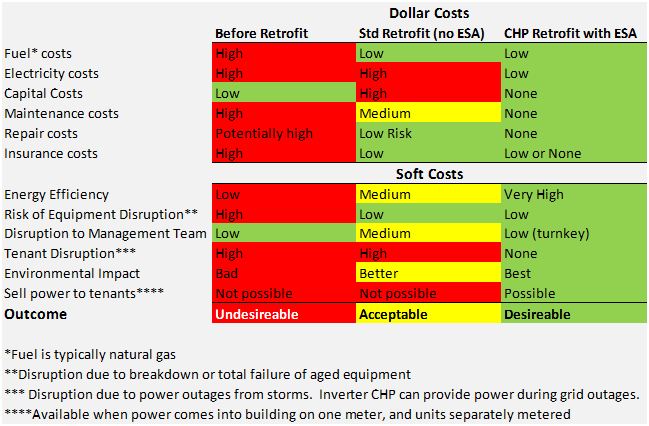Energy Services Agreements (ESAs) are an innovation in how energy is managed and paid for. ESAs provide funding for energy-related capital improvements. They also provide other benefits as described in the list that follows. As might be expected, there are limitations that organizations need to weigh when considering entering into an ESA.

Pros of ESAs
1. No capital costs for retrofit borne by building owners
2. Net cash flow positive for building owners (usually)
3. Planning and execution of capital upgrade costs handled by ESA contractor
4. Maintenance of capital equipment managed, and costs borne by contractor
5. Organization management can stay focused on organization’s mission
6. ESAs often enable needed improvements to take place more quickly
7. Larger financial benefits can accrue when an ESA enables capital upgrades to be made near-term rather than waiting for capital to become available
8. ESA payments can be treated as an expense
9. Gas is cheaper in some locations when used in CHP
Cons of ESAs
1. Upgrades to existing energy and water assets can cause temporary disruptions that need to be planned for
2. Contracting organization must have trust in ability of contractor to plan, execute and manage properly

